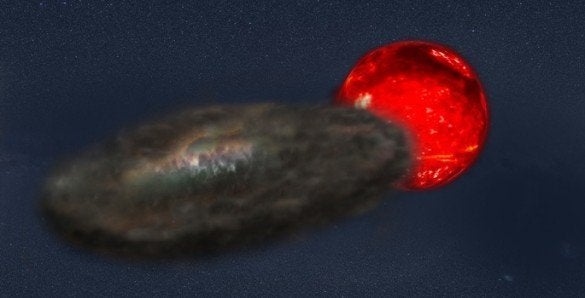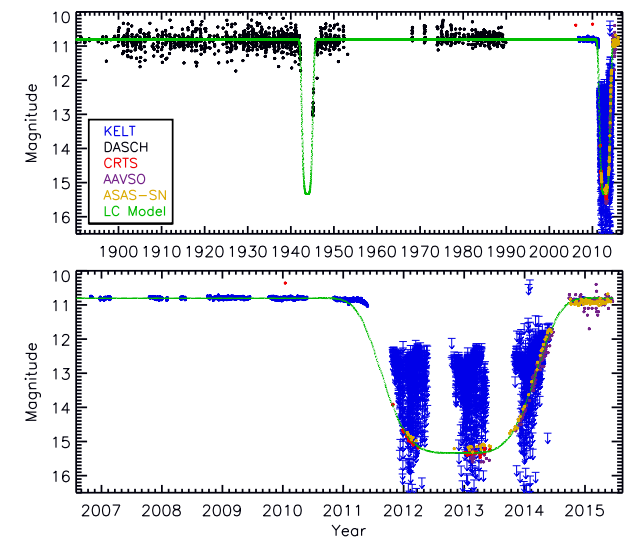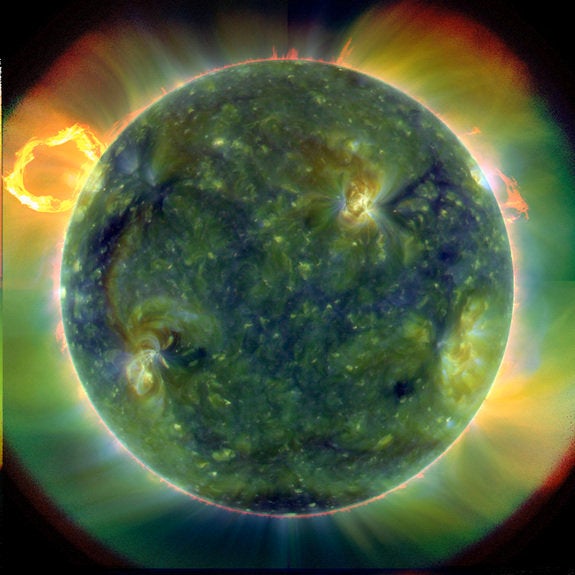
Total solar eclipses are short-lived events, lasting no more than a matter of minutes. Eclipses of other stars in our galaxy -- so-called stellar eclipses -- can last a bit longer.
How much longer? A team of astronomers just discovered a binary star system in which one red giant star orbiting another eclipses it for a remarkable three and a half years.
That makes this the longest-lasting stellar eclipse ever observed.
Known only as TYC 2505-672-1, the system -- the discovery of which is described in a paper that was accepted last month for publication in Astronomical Journal -- also has the longest period between eclipses ever seen. Sixty-nine years pass between one eclipse and the next.
The system, located in the constellation Leo Minor, eclipsed during World War II and again from 2011 through 2014, New Scientist reported. The next won't come until April of 2080.
It's easy enough to understand solar eclipses, in which light from the sun is blocked as the moon passes between it and the Earth. Ditto for lunar eclipses, in which the moon appears to dim as it passes through the Earth's shadow.
But how can one star blot out another if both emit light?
The team, led by astronomers from Vanderbilt and Harvard, believe it's because one of the stars in the system is encased in a cloud of dust and gas so thick that it blocks light.
"About the only way to get these really long eclipse times is with an extended disk of opaque material," Joseph Rodriguez, an astronomy graduate student at Vanderbilt University and the first author of a paper about the discovery, said in a written statement. "Nothing else is big enough to block out a star for months at a time."
(Story continues below graph.)

The stars in the system orbit each other at a distance of 20 astronomical units (AU), according to the astronomers. That's really, really far. One AU -- roughly the average distance from the Earth to the sun -- is 93 million miles, or 150 million kilometers. Twenty AU is roughly the distance from the sun to Uranus.
The previous record-holder for stellar eclipses was Epsilon Aurigue, a yellow giant star that is eclipsed by its companion star every 27 years for periods lasting from 640 to 730 days, according to the statement (see video animation below). That system is comparatively easy to study, as it is brighter than TYC 2505-672-1 and much closer -- only 2,200 light-years from Earth as compared to 10,000 light-years for TYC 2505-672-1.
To characterize a star system as dim and distant as TYC 2505-672-1, the team made use of observations from sources including the Kilodegree Extremely Little Telescope and the American Association of Variable Star Observers.
The team also relied upon a remarkable collection of photographic plates of the northern sky made between 1890 and 1989.
"It's absolutely incredible that we can use astronomical data on century timescales," Rodriguez told The Huffington Post. "It's bringing us into a new age of astrophysics."
Also on HuffPost:
Also on HuffPost:

